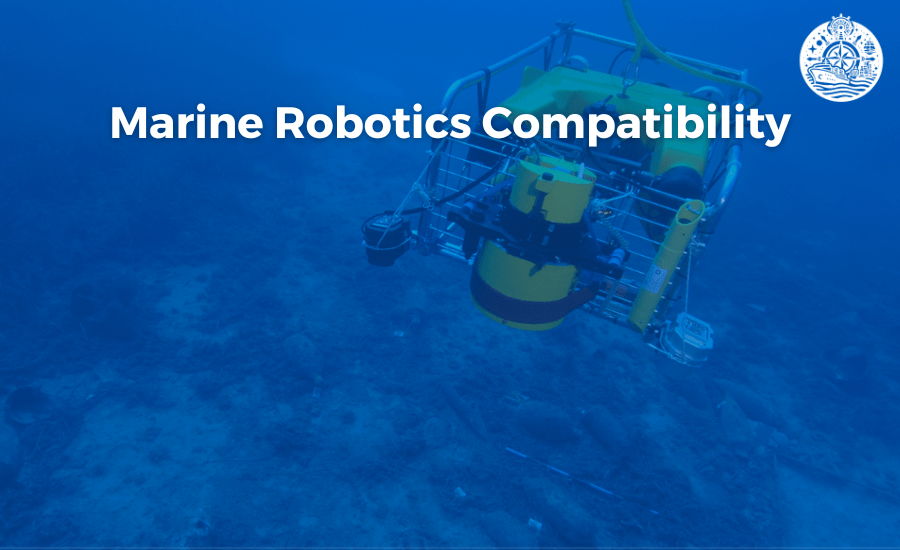
Today, we live in a digital age characterized by intelligent devices. Remotely controlled, self-driving vehicles can go places humans can’t go. Helping researchers sample previously inaccessible parts of the ocean and atmosphere and areas that are poorly sampled. Like the Southern Ocean. You can easily expand the overall geographic scope of your region. RRS Sir David Attenborough acts as the central platform for the deployment and operation of a range of cutting-edge autonomous Marine. And remotely controlled vehicles in polar regions. It also has enhanced communications and data processing capabilities. Enabling real-time data distribution and remote operation of equipment in the UK.
Autonomous Submersible
Vehicle An autonomous submersible vehicle (AUV) is a robotic Marine used to explore the world’s oceans. Without direct control from a ship. They typically travel along pre-programmed routes to explore dangerous or inaccessible areas, such as beneath ice shelves or at the front of glacier collapse. AUV ‘Undersea’ is used by RRS James Clark Cross during his JR240 ICEBell cruise at Beringhaussee. The Seabed is an autonomous underwater vehicle from the Woods Hole Oceanographic Institution (WHOI), this time carrying a variety of “upward-facing” instruments to survey sea ice from below. Some autonomous underwater vehicles are equipped with a variety of “look-up” instruments to survey sea ice from below.
Autosub
The Autosub AUV series was developed by the National Oceanographic Center (NOC). They are equipped with cutting-edge battery technology, advanced satellite communications, and ocean sensors that map the ocean floor and measure the physical and chemical properties of seawater. Before launching from a ship, an AUV’s computer is programmed with instructions about where to go, what to measure, and how deep to dive. It can reach depths of up to 6000 m. Since it is not connected to the main vessel, all communication with the AUV is limited to the use of acoustics while the AUV is underwater.
Satellite communications are only available when the autosub is at sea level. NOC has a number of different Autosub models, including the latest version, Autosub Long Range. This vehicle, also known as his Boaty McBoatface, was first used on his RRS James Clark Cross in March 2017 as part of his DynOPO research cruise in Antarctica. JR58 automated Marine readiness checks on RRS James Clark Ross during the cruise.
The Autonomous Unmanned Vehicle (AUV)
Autosub-2 will travel beneath the sea ice and carry various scientific instruments to inaccessible parts of the ocean to measure the distribution and abundance of Antarctic krill and ice thickness. Autosub checks before deploying. The autonomous unmanned vehicle (AUV) Autosub-2 will travel beneath the sea ice and carry various logical disobedient to blocked off parts of the sea to measure the distribution and abundance of Antarctic krill and ice thickness.
Ocean Glider
An underwater glider is a sort of mechanical submerged vehicle that employments an expandable oil-filled bladder for propulsion instead of a traditional propeller. As fluid is pumped into and out of the bubble, the glider’s volume changes, but its mass remains the same. This changes the density and allows the device to float or sink in water. Its wings convert this vertical motion into forward motion. Gliders are very energy efficient, making them useful tools for collecting long-term data from the ocean. Depending on the sensors, instruments, and additional batteries used, the glider can fly for up to 12 months. It can also be left in place to take measurements when the ship is elsewhere. It can be controlled via a two-way satellite communications link above sea level.
Remotely Operated Vehicle
A remotely worked vehicle (ROV) is an unmanned, exceedingly maneuverable submerged robot. Not at all like AUVs, they are associated to the dispatch via cables and controlled by an operator on board. The cable acts as an “umbilical cord” that provides power to the ROV and relays information such as video film and information collected by the vehicle. ROVs empower complex surveys of the ocean floor and enable the collection of precise samples from the ocean floor. Experiments at extreme depths that are inaccessible to human divers due to water pressure are also possible using ROVs. ROVs can be precisely steered by thrusters (propellers). Using a camera, the controller can retrieve small and sensitive objects with more precision than other sampling systems.
Scientists will also be able to see the undisturbed areas where samples are taken, allowing them to better understand habitat and structure. Complex field experiments can also be performed while maintaining environmental conditions and minimizing damage to the sample due to surface recovery. Isis ROV The National Marine Center currently operates its ROV called Isis. It is the UK’s deepest purpose-built submersible ROV for science. Isis will collect samples, drill sediment cores, and record high-resolution video and still images in the ocean at depths of up to 6,500 meters. It weighs 4000 kg and is equipped with a camera, lights, engine, and numerous scientific sensors.
Hybis ROV
RRS Sir David Attenborough also offers space for the HyBIS ROV. HyBIS may be a measured, flexible mechanical submerged Marine that can reach profundities of up to 6000 m. It is equipped with sampling grabs, cameras, and equipment to record deep-sea conditions. Unlike traditional ROVs, HyBIS’s descent and ascent, as well as its operating depth, are controlled from the ship. This means that loads (such as sampling equipment) can be distributed and recovered over distances of up to 700 km.










